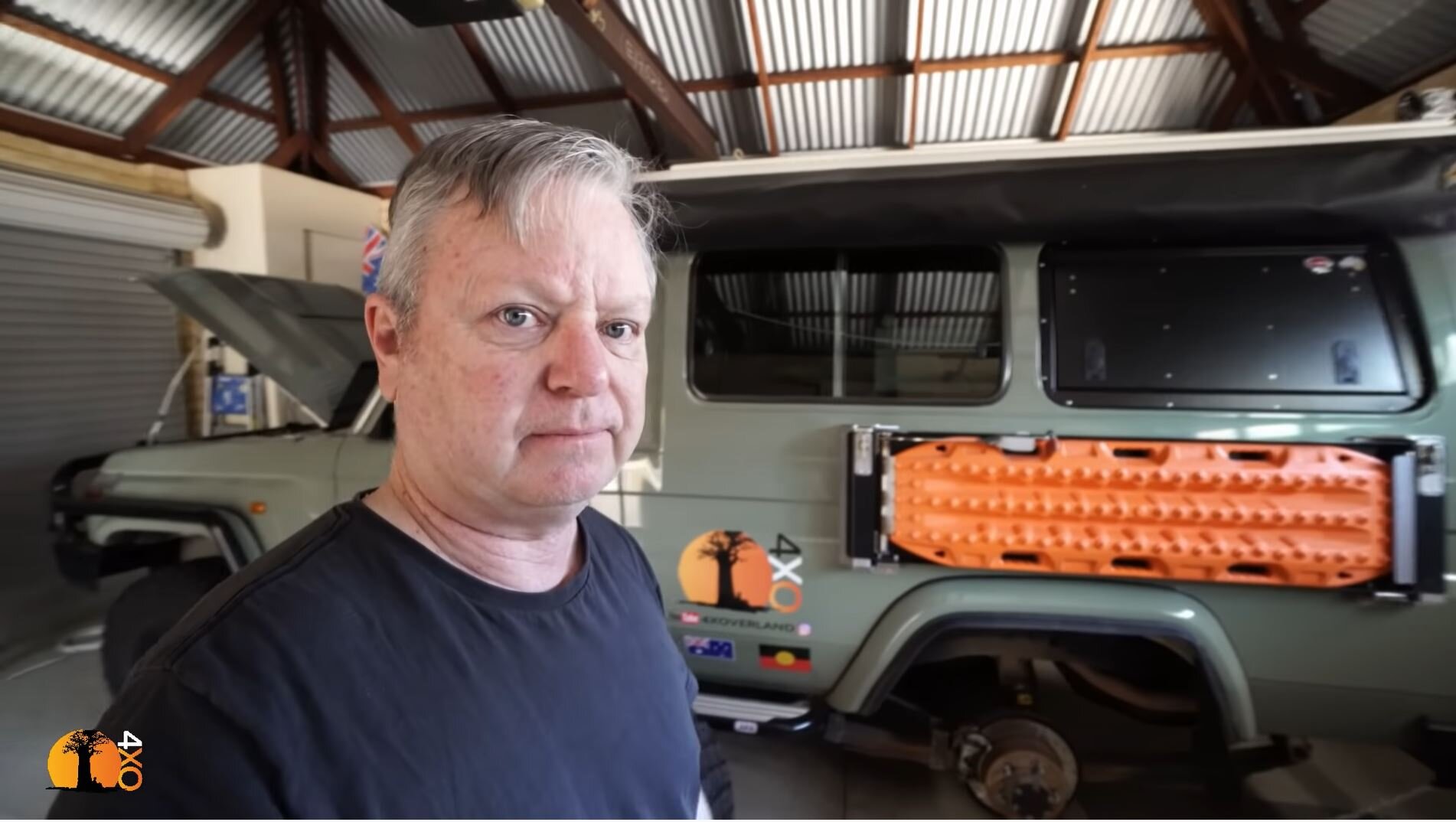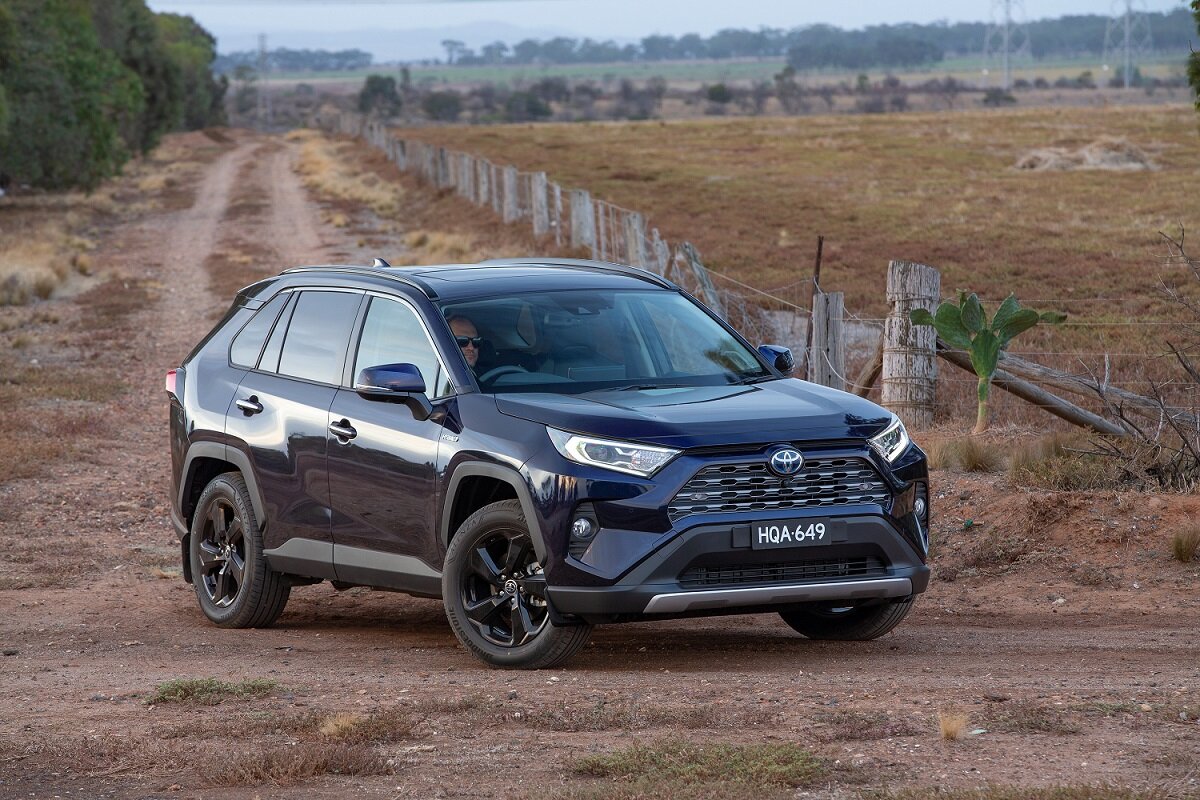Toyota LandCruiser 300 diesel V6: Is the twin-turbo a lemon?
The new Landcruiser 300 V6 diesel engine will feature an engine where the exhaust is in the vee, between the cylinder banks, and this could be problematic. Here’s why…
This is the second and final part of this report about why you should wait at least a year before putting a deposit down on the over-hyped and probably underdone new LandCruiser 300.
In part one, we covered Why the media is wrong about the LC300 >> of Toyota’s PR material, the official details, or the deluge of remarkably positive things their marketing campaign had to say about the inadequate improvements made to a vehicle which has had decades to improve - but hasn’t.
And here’s Everything (else) wrong with the new Toyota LandCruiser 300 >>
If you trust Toyota to get this new Landcruiser 300 engine right, you’re probably a bolted-on fan-boy, or you haven’t been given any technical analysis in the reviews you’ve read.
I don’t think Toyota can do it, and the evidence is on my side. History is the predicter of the future, so you can bring the hate; I’ll bring the facts.
In this report, we’re going to put the new V6 twin-turbo diesel engine in the crosshairs. It’s a ‘hot vee’ design, which has exhaust ports up the top of the engine, in the V, between the two banks of cylinders, and with the inlet ports on the outside, which is arse-backwards in the context of vee-configured engines.
A hot vee is not intrinsically a bad idea. The core message for you, if you are thinking about dropping $100,000 on a place in the LandCruiser 300 queue is to look at Toyota’s recent track record with deploying new technology. The facts should tell you they’re bad at this.
This is Toyota’s most complex and ambitious engine in years, and there’s a 10-speed transmission, with terrain sensing tech. As you may know, complexity is the enemy of reliability, but so is the average accountant who runs R&D departments in car companies.
You’re probably reading this thinking, ‘Toyota spends millions on reliability’, which is true, but specifically, what Toyota actually does is spend millions to market the concept that Toyota is the god of reliability. I would argue this is objectively not the case. A gulf separates the message and the reality, and it appears to be getting wider, in my view.
The advice you’re getting here is to let someone else be the lab rat, because the best way to manage this risk is to let others run the experiment. Then, when the dust settles and we have a track record of nothing going wrong with the LandCruiser 300, you can benefit from the results. Just watch from the sidelines, and if the 300 is bulletproof, I’ll take the reputational hit.
We don’t know if Toyota has pulled off the reliability thing with new LandCruiser 300; wait and see…
The past is a predictor of the future, and this is a risk you should not ignore, based upon Toyota’s recent technology deployment botches. We manage risk in this way, all the time, in other areas of life.
It’s the same with wearing a seatbelt when you drive. The risk of injury in a crash is high, and the potential consequences of crashing unrestrained are profound, we wear seatbelts every drive.
USEFUL LINKS FOR OFF-ROADING, TOURING & TOWING
Hard shackles -Vs- soft shackles in 4WD recovery >>
Basic safe 4WD recovery rules for off-road adventuring >>
4X4 Snorkels: Ultimate Buyer's Guide (you probably don't need one) >>
Complete heavy towing guide: GVM, GCM, payload, towball limits explained >>
Heavy towing with auto transmissions: what not to do >>
The truth about modifying 4X4 dual-cab utes for remote adventuring >>
My AutoExpert AFFORDABLE ROADSIDE ASSISTANCE PACKAGE
If you’re sick of paying through the neck for roadside assistance I’ve teamed up with 24/7 to offer AutoExpert readers nationwide roadside assistance from just $69 annually, plus there’s NO JOINING FEE
Full details here >>
Toyota’s track record foreshadows LC300
Let’s have a look Toyota’s greatest hits in recent history and assess the risk of going early on the new LadnCruiser 300.
First, check out Andrew St. Pierre-White’s video on his excellent channel, 4XOverland, uploaded on November 1, 2018. About 9000 kilometres into owning his 79 Series, the rear brake rotors just fall apart and ASPW gets a double helping of ‘not interested’ at the Toyota dealership. Watch ASPW’s video here >>
These are the simple drum brakes on an incredibly basic vehicle that is the reliability heart beating inside Toyota’s chest, and it belongs to Andrew St. Pierre-White who is a bolted-on Toyota fan, and with 250,000 subscribers who listen when he speaks. It’s really not normal for the brakes to wear out so early and simply from touring. It’s a problem that screams ‘manufacturing defect’.
Then Toyota launched the RAV4 hybrid in 2019, with buyers queuing up over the horizon, and suddenly there was some mysterious problem where you couldn’t buy one. 12 months later, the waiting list was longer than for a Ferrari. That’s how Josh Dowling from CarAdvice described it. This mysterious delay also affected the Lexus CT Hybrid, the Toyota C-HR with different hair and makeup, with silence from Toyota on the cause of the problem.
This was for a vehicle that was designed in 2015 or earlier, confirmed for Australia in 2018, launched here in 2019, and still could not be supplied in 2020. And this was from a company with nearly US$600 billion in assets, nearly 400,000 employees, more than a quarter of a billion $USD in revenue, making more than nine million vehicles annually. As stuff-ups go, whatever went wrong with their hybrids, it must have been epic.
This is evidence, like smoke and fire, with a common link, on the balance of probability.
Then there was the ‘dusting’ issue prematurely killing 200 Series engines (and the 2.8) Australia wide. Aftermarket outfits then started engineering better airboxes, which begs the question of ‘how hard could it have been?’ to get right, given Toyota’s infinite resources and hallowed presence in Australia. It’s not as if they didn’t have access to the outback in which to R&D the hell out of the 200 Series’ air intake. Or even whip up a quick fix during the 200’s geologic lifespan.
And finally, of course, the big one - the exquisite botch of the Toyota DPF system, as implemented on the 2.8 diesel in Hilux, Fortuner and Prado.
Six years after the Hilux 2.8 launched in Australia, they’re still trying to see the end of that DPF R&D shortfall.
For starters, this has always been a fairly mediocre engine, in terms of sheer performance, which cannot match the superior specific power output of the Hyundai-Kia 2.2 diesel anywhere from 1750rpm all the way to peak power.
If you’re not an engineer or high-level mechanic, specific power is power divided by swept engine volume.
None of this is not my opinion, it’s a fact.
And then, Toyota botched the DPF implementation in the way Hyundai-Kia didn’t. Hiluxes, Fortuners and Prados were having diesel particulate filter and general plumbing meltdowns relating to this issue, which got so bad, Toyota was forced (it didn’t choose to do it early, public awareness forced it) to jam a fifth injector in the exhaust flow to facilitate regeneration of the DPF.
The fix means it either bakes itself open or bakes itself closed, causing the DPF to regenerate endlessly in the case of ‘baked open’ or just clog up by virtue of being baked closed and thus never regenerating. Brilliant. This is an educated guess (which I’m qualified to make), because I can’t think of another mechanism that fits the symptoms.
Your DPF warning light just came on: What should you do?
And of course, Toyota’s response to this huge problem was to ignore it for as long as possible, which meant customers driving the most popular vehicle in the country, were ignored by a gigantic global brand which makes nine million vehicles a year, and employs 400,000 people.
After years of closing its eyes and blocking its ears, Toyota suddenly started distributing DPF Band-Aids. Deny, deny, deny - here’s the fix. If Hyundai or Kia had done that, there would have been a feeding frenzy and the brands’ reputation would’ve been smashed.
Instead, the media gave Toyota a gentle tap on the wrist, with complimentary excuse-making such as, ‘This wasn’t Toyota’s fault. It was the regulations’.
Fraser Stronach wrote an insomnia-curing apology piece of exactly this nature in that great bastion of advertiser advocating, WhichCar or 4X4 Australia or whatever it’s called. It was odd that despite his gentle ‘tsk tsk’ of Toyota, he didn’t manage to explain how some manufacturers managed to get DPF implementations right - possibly because Toyota is such a big, wealthy advertiser for the publication.
Fraser’s nauseating opinion on Toyota’s 2.8 issue suggests Hilux owners drive faster in urban areas to avoid DPF problems. Great idea (not).
Nor did I see him address the fact that emissions regulations are here for human health, seeing as exhaust pollution kills more people prematurely than road trauma. In fact, he claimed emissions regulations were the problem.
Clearly, the best emissions regulations are the strictest ones, and Australia drags the chain badly at implementing them, because we have dickheads in charge, with lobby groups like the disgracefully Toyota-friendly Federal Chamber of Automotive Industries, which obeys when told exactly when to jump, and how high.
Then there was the dirty letter Toyota’s lawyers sent to independent workshop Berrimah Diesel after the chaps there started calling out on the DPF problem in 2.8 diesels. I have a copy of that letter, which is an example of how Toyota seems to do business behind closed doors and all those glossy, warm-hearted TV ads.
NEED DIESEL ENGINE & DPF HELP?
Why you should never tune your diesel engine >>
DPF regeneration for dummies >>
Modern DPF problems: The Truth, so help me >>
Do diesel engines actually run lean? >>
Will my DPF regenerate with highway driving? >>
Practical engine run-in advice for tradies with utes >>
Diesel Buyer's Guide: How to buy, own and maintain a modern diesel engine >>
LandCruiser 300 has too many unknowns
With that long and elaborate list of R&D failures in mind, there’s now this new V6 diesel with its hot vee.
Now, just to be clear on Toyota’s engineers within R&D, I think those engineers themselves are quite competent, I just get the impression accountants are the common causal factor. Because this is exactly what happens when you let accountants run the show, they never go with the best option, they pick the cheapest options.
Now, hot vees are actually a nice idea with some distinct advantages, obviously. A hot vee allows you to get the turbos very high up in the exhaust manifold, which achieves two things.
Firstly, that’s where the exhaust flow is most energetic. Meaning, in any combustion cycle, the mixture burns, it expands energetically, and that throws the piston down the bore, which is what propels you and your aluminium effluent box all the way across Australia.
However, the exhaust valve opens before all the expansion is complete, which helps the exhaust to get blown out the manifold and out the pipe, ultimately. But you lose some energy in this process, which could - hypothetically - do useful work, and this is a trade-off compared with what you would lose by pumping it out with the piston, if the valve were to open later.
Turbos benefit from this otherwise lost flow energy. A turbo uses the energy still in the energetic exhaust flow to drive a pump, to pump air in on the inlet side. This design puts the turbos in a really strong position to operate effectively, and the closer you can get the turbo to the source of the exhaust, the better, because that’s where the flow is hottest, meaning most energetic.
And the second advantage with a hot vee is a reduction of what’s known as ‘turbo-lag’, which is simply the time taken from when you power-on for increased flow to the turbos to manifest itself as increased air delivery on the inlet side.
What we don’t know is how reliable this extremely hot, complicated engineering is.
So, generally speaking, that’s all good. The ‘lag reduction’ thing is one of those prescribed Toyota appeasing spin points the mainstream motoring media has latched onto in order to keep the ad revenue coming.
Now, I have mad love for BMW, specifically with the hot vee in its N63 engine. That’s the 4.0-4.4-litre twin turbo petrol V8 that’s been deployed since about 2008. I absolutely love that engine; auto-erotically it’s up there with the current BMW M-tuned straight sixes. But these hot vee engines get a lot of air flow, and they don’t work nearly as hard as a LandCruiser 300 is going to be expected to - and here’s the big problem.
A hot vee is not all good news, and the problem/s are not acknowledged in the reports I’ve read on the 300, presumably due partly to ignorance and also deliberate omission to stay in the good books with Toyota.
The main problem with a hot vee is heat.
It’s all smiles depicting an empty, petrol LC300 in the hot dunes, but how about the diesel towing a 3-tonne trailer north of Sydney in 40-degrees?
It’s hard to get rid of the latent heat in the vee, at times, especially after heavy towing up steep hills and you suddenly turn the engine off.
All that heat, from all that work, suddenly has no airflow, especially on a relatively cool Outback Australian day at around 45 degrees C, ambient. All that heat has nowhere to bleed, so it kinda soaks in - and that’s the problem.
Specifically, for the engine, poor thermal management near the turbos means oil consumption can be excessive, and valve stem seals can wear out prematurely.
On diesels we’re talking about exhausts at 600-700 degrees C going straight into the turbos, bleeding into the vee, especially if you stop or just lope along with a tailwind (or no wind at all) after a hard climb.
There will need to be good heat shielding too, because we wouldn’t want the bonnet catching fire. Although, I’m sure ARB will release a heat shield removal kit of some description.
Heat rises, and it’s going to get trapped in there when airflow stagnates. This means it’s going to be very hard for gaskets, seals and oil to maintain integrity at those kinds of temperatures.
What if I told you the LandCruiser 300 could be a lemon? Imagine a world where that was possible…
I’m not saying this cannot be managed, because it can, and I’m not saying Toyota cannot get this right. They absolutely can. What you need to look carefully at are the things they’ve botched recently; engine and exhaust technology which is all much simpler than this all-new hot vee engine, with a completely different flow philosophy and all-new inherent challenges.
Is that a risk you really want to run, at $100,000 (or more)?
If the LC300’s hot vee twin-turbo does have inherent design defects, do you want to be dealing with Toyota in the manner of the 2.8 DPF fiasco? They still haven’t put that enormous problem to bed, with a class action still pending.
Honestly, I hope Toyota gets it right - I sincerely do - but the risk of getting it wrong is higher than it should be. Perhaps it’s prudent for you to sit this one out, initially, and watch the game from the sidelines for the first 12 months.
In my expertise, this engine (at least for early adopters) could be a lemon simply because some senior executive accountants, who have never had their hands on a single tool or even visited the R&D centre, has decided to run with the five-cent valve seals, when the seven-cent ones would have been far more durable.
That’s generally the underlying anatomy of where these fiascos start. It’s a corporate culture which I don’t think Toyota has solved - and in my opinion, it’s the company’s biggest problem.
If you ask me, there’s a long, recent track record suggesting it’s getting worse.



























The Hyundai Palisade is a big, comfortable holiday machine for growing families and offers excellent value, generous 8-seat SUV space, and practicality on par with LandCruiser - but it’s $30K more affordable.